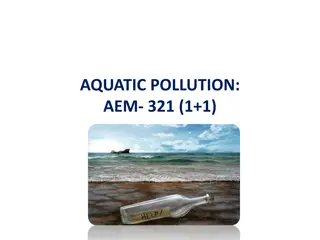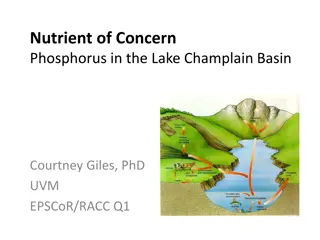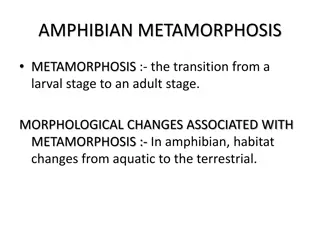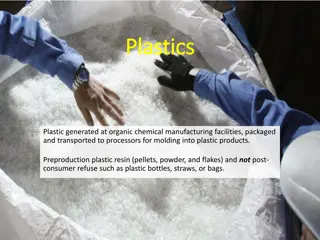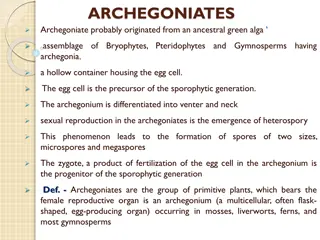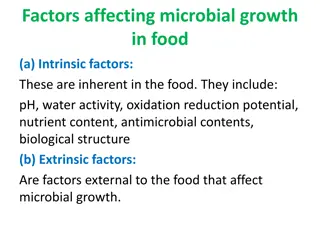Understanding Environmental Factors in Terrestrial and Aquatic Environments
Environmental factors play a crucial role in shaping ecosystems. In both terrestrial (land) and aquatic (water) environments, organisms are influenced by abiotic factors such as temperature, light intensity, and pH, as well as biotic factors like plants, predators, and competitors. Understanding these factors is essential for studying and conserving ecosystems.
Download Presentation

Please find below an Image/Link to download the presentation.
The content on the website is provided AS IS for your information and personal use only. It may not be sold, licensed, or shared on other websites without obtaining consent from the author. Download presentation by click this link. If you encounter any issues during the download, it is possible that the publisher has removed the file from their server.
E N D
Presentation Transcript
Need to know Define and give examples of the following as applied to terrestrial (land) and aquatic (water) environments: Abiotic Biotic Climatic Edaphic factors 2
Environmental factors that affect organisms Abiotic These are non-living factors Biotic These are living factors Climatic These are the average weather conditions that affect the community in an ecosystem Edaphic These refer to the soil 3
Abiotic factors These are the non-living features of an ecosystem (i.e. the physical and chemical conditions) that affect the community. 4
Abiotic factors include: Temperature Light intensity Air speed Water current Humidity pH Dissolved oxygen Salinity Nitrate, phosphate and other plant nutrients 5
Abiotic factors in a woodland Wind Heat Rain Light Sun Shelter Humus Soil Moisture Soil pH Minerals 6
Learning check What are the environmental factors that affect organisms? Abiotic Biotic Climatic Edaphic 7
Biotic factors These are the living features of an ecosystem that affect the other members of the community. 8
Biotic factors include: Plants for food and shelter Predators Prey Parasites and pathogens Decomposers Competitors Pollinators 9
Learning check What is meant by abiotic factors? These are the non-living features of an ecosystem (i.e. the physical and chemical conditions) that affect the community. Give examples Temperature, Light intensity, Air speed Water current, Humidity, pH, Dissolved oxygen, Salinity, Nitrate, Phosphate and other plant nutrients 10
Climatic factors These are elements of the climate (weather) that influence the life and distribution of the organisms that live in a particular environment. 11
Climatic factors include: Temperature Rainfall Humidity Wind Light intensity (including seasonal variations) Day length 12
Learning check What are biotic factors? These are the living features of an ecosystem that affect the other members of the community Give examples of biotic factors. Plants for food and shelter Predators and Prey Parasites and Pathogens Decomposers, Competitors, Pollinators 13
Edaphic factors These are the physical, chemical and biological characteristics of the soil that influence the community. 14
Edaphic factors include: Soil type, Soil pH, Available (soil) water, Air and Mineral content, Humus, Soil texture and Structure. 15
Learning check What are climatic factors? These are elements of the climate (weather) that influence the life and distribution of the organisms that live in a particular environment Give examples Temperature, Rainfall, Humidity Wind, Day length Light intensity (including seasonal variations) 16
Aquatic Environmental Factors The following are also considered as factors: Light penetration Currents Wave action http://upload.wikimedia.org/wikipedia/commons/thumb/7/7c/Nur05018.jpg/300px-Nur05018.jpg 17
Learning check What are edaphic factors? These are the physical, chemical and biological characteristics of the soil that influence the community. Give examples Soil type, Soil pH, Available (soil) water, Air and Mineral content, Humus, Soil texture and Structure 18
END 19





